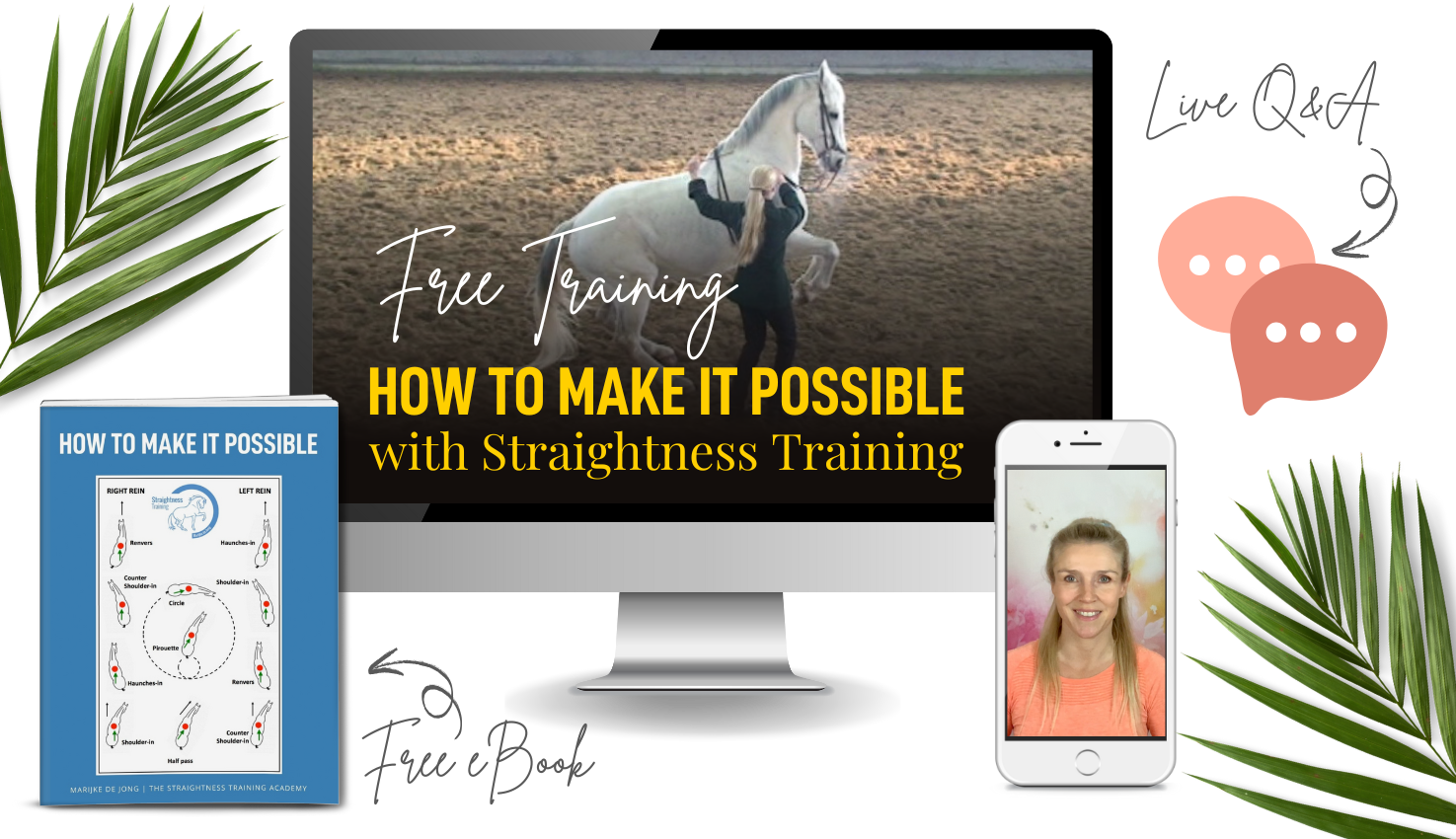
Horizontal Imbalance

Did you know, that because of the relatively heavy head and neck, horses carry more weight on the front legs than on the hind legs?
This unequal weight distribution between front legs and hind legs is a dimension of the natural asymmetry.
We call it the horizontal imbalance.
You see, naturally, all horses carry about 3/5th of their weight on the shoulders and 2/5th on the hind legs.
For example, let’s say that a horse weighs 500 kilos. Then 300 kilos are carried on the front legs and 200 kilos on the hind legs.
It’s very unequal, isn’t it?
But so far, it’s not a problem: at least, as long as the horse enjoys his time in the pasture and no-one is riding him.
Only what happens when the horse has a rider on his back?
Well, then the horizontal imbalance and the extra weight on the horse’s fragile front legs can cause many problems.
Let’s check out the:
Symptoms with the weight of the rider
When a rider rides a horse that moves in its natural horizontal imbalance, the following symptoms can arise:
- The horse leans on the rein and uses the hand of the rider for support, like a fifth leg.
- The horse can overreach because the front legs are too slow leaving the ground.
- The horse shows little shoulder-freedom.
- An unbalanced horse can become tense. Such a horse has problems relaxing and can show resistance to the rider.
- A tense horse will not give the rider a light, equal, elastic and vivid contact with the bit.
- An unbalanced horse will lose its rhythm when making transitions in tempo.
- The horse moves “downhill”.
- Due to the weight of the rider that is added to the front legs, strain injuries can occur.
So, the horizontal imbalance makes riding much less fun and can even cause some serious issues.
How can we enjoy our riding more and prevent our horse from strain injuries?
The answer is simple: we need our horse to be able to carry us properly and in good balance.
This means we need Straightness Training.
Because, thanks to the exercises of Straightness Training we can shift the center of mass more back and as a result, the horse will start to move ‘uphill’:

Click HERE to read more about which ST Exercises you can use >>
What about your horse?
- Does your horse feel heavy on the reins?
- Does he have a ‘hard mouth?’
- Does he stumble a lot?
- Are the back hoofs taping the front hoofs during riding?
- Or does he feel light in your hands?
- And is he moving ‘uphill’?
If you are concerned that your horse is too much on his front legs, or simply would love the feeling of more lightness during riding, it’s really worth learning more about Straightness Training.
Let’s go uphill together!

